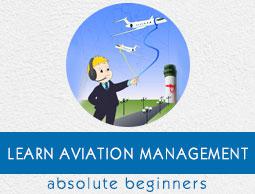Aviation Management - Airline Marketing
Airline is part of the travel and tourism service industry, where rivals compete to offer the best experience in spite of similar end products. Unlike organizations that sell tangible products such as cars, stationery, or food brands, the airlines sell elite experience to their customers. The experience that they provide to the customers is intangible as well as invisible.
Airline Marketing Environment
The airlines find out insights of the marketing environment using a powerful model of analysis called the PEST analysis.
PEST Analysis
The field of marketing comes up with a useful model for the study of an organization’s Marketing Environment. This model proposes that the factors should be categorized into Political, Economic, Social, and Technological (PEST).

This model turns up reliable for the airline industry to understand market growth or decline, business position, and direction for operations.
Political Factors − Fear of terrorism, political instability in the country, deregulation of government policies.
Economic Factors − Economic growth or instability in the country.
Social Factors − Aging population, change in holidaying tastes, change in family structures, uncertain labor.
Technological Factors − High-speed electronic devices, fuel-efficient aircrafts, Internet.
Knowing the Airline Customers
To market their service, the airlines works on understanding their customer’s psyche, demographics and needs.
Airline Customer Segmentation
The airline customers are divided into the following segments −
Old Travelers − They are aged customers probably retired and go on holidays frequently.
Business Travelers − They are frequent flyers and form a large segment.
Budget Conscious Travelers − They look for the most inexpensive airline without knowing much about the different airline services.
Loyal Travelers − They travel frequently and as they travel frequently with the same airline, the airline offers some benefits to them and also the miles.
Urgent Travelers − They share a small market segment and do not fly frequently. They fly only for unexpected causes.

What do Customers Expect Before, During, and After the Flight?
Here are few considerations the customer thinks of before selecting an airline service −
Timeliness in Service − Delays at baggage counters and in flight departure create a lasting negative impact on the passengers.
Assurance of Reliable Service − The airline staff committed to service and highest customer satisfaction. The quality of service is always up.
Convenience − Easy check-ins systems and ticket reservations.
Attentiveness − The airline staff that recognizes needs and works a step ahead to meet them constructively.
Comfort − Adequate knee and leg room around seat.
Meals − Free in-flight meals of satisfactory quality.
Safety and Security − Emphasis on safety and security.
Customer Psyche and Airline Marketing
For airline businesses, it is very vital to retain the customers, increase their loyalty, and facilitating the spread of positive word of mouth. The airline marketing staff reads the apparent needs and true needs of the customer. The airlines can do this by providing them the best experience of flying with them as the customers rely mostly on their own experience with the airline. If the airline is successful in meeting its customers’ needs, then it makes a notable name and money for itself.
Airline Marketing on Social Media
All the airlines around the world understand that today’s customers are tuned to Internet almost all the time hence, the airlines tend to make a striking presence on Internet. The airlines are leveraging ways to reach their customers using social media too.
For example, Cathay Pacific Airways has created a Facebook page to display deals, promotions, limited-period offers, and videos about the airline. Qatar Airways has a strong presence on Twitter with sharing news, events, upselling, and conveying the information on how the company is doing.
Turkish Airlines marketing policy depends on using hashtags for building relevance and authenticity, whereas Emirates is using Instagram.
Maintaining presence on the social media is a 24x7 work for which the airlines hire people, who know business strategies, write powerful content, and have the knowhow of brand positioning.

The airlines use Meme Jacking, the concept that spreads from person to person via Internet. It is an effective way to create a buzz around the brand.
The airlines also create webpages and videos based on the customers’ location and culture. The videos go viral and work without bringing out the customers from their comfort zone.
Airline Alliances
An alliance necessarily means an agreement between the airlines to work in cooperation substantially.
Why Airlines Form Alliances?
Working in alliances has benefits for both the airline and also the travelers.
Benefits of Alliance for Airline
Reduction in maintenance cost.
Reduction in operating staff.
Reduction in investment and procurement costs.
Benefits of Alliance for Traveler
Lower ticket prices due to lowered operational costs.
More options for departure times to choose from.
More destination options.
Shorter travel time.
Access to a large range of airport lounges shared with alliance members.
Faster mileage rewards in single account on several different carriers.
Major Airline Alliances
There are three major airline alliances −
Star Alliance (founded in 1997, 27 member airlines)
Oneworld (founded in 1999, 15 member airlines)
SkyTeam (founded in 2000, 20 member airlines
Air India is a member of Star Alliance.
Airline Loyalty Marketing
Many companies around the world earn more than 75% business from their loyal customer base of about 20%.
What is Airline Loyalty Marketing?
It is a business practice of the airlines to build trust among frequent customers by rewarding them so that they conduct business with the company continually. Loyalty marketing motivates the customers to remain loyal to the business by adopting loyalty programs.
For example, the customers are given an electronic account with the airline where the airline can deposit frequent flyer miles which can be redeemed for the next trip.
For Which Airline Customers Loyalty Marketing Works?
Loyalty marketing works with the customers who need to fly frequently or who choose the business with a particular airline because it successfully satisfies customer requirements uninterruptedly.





